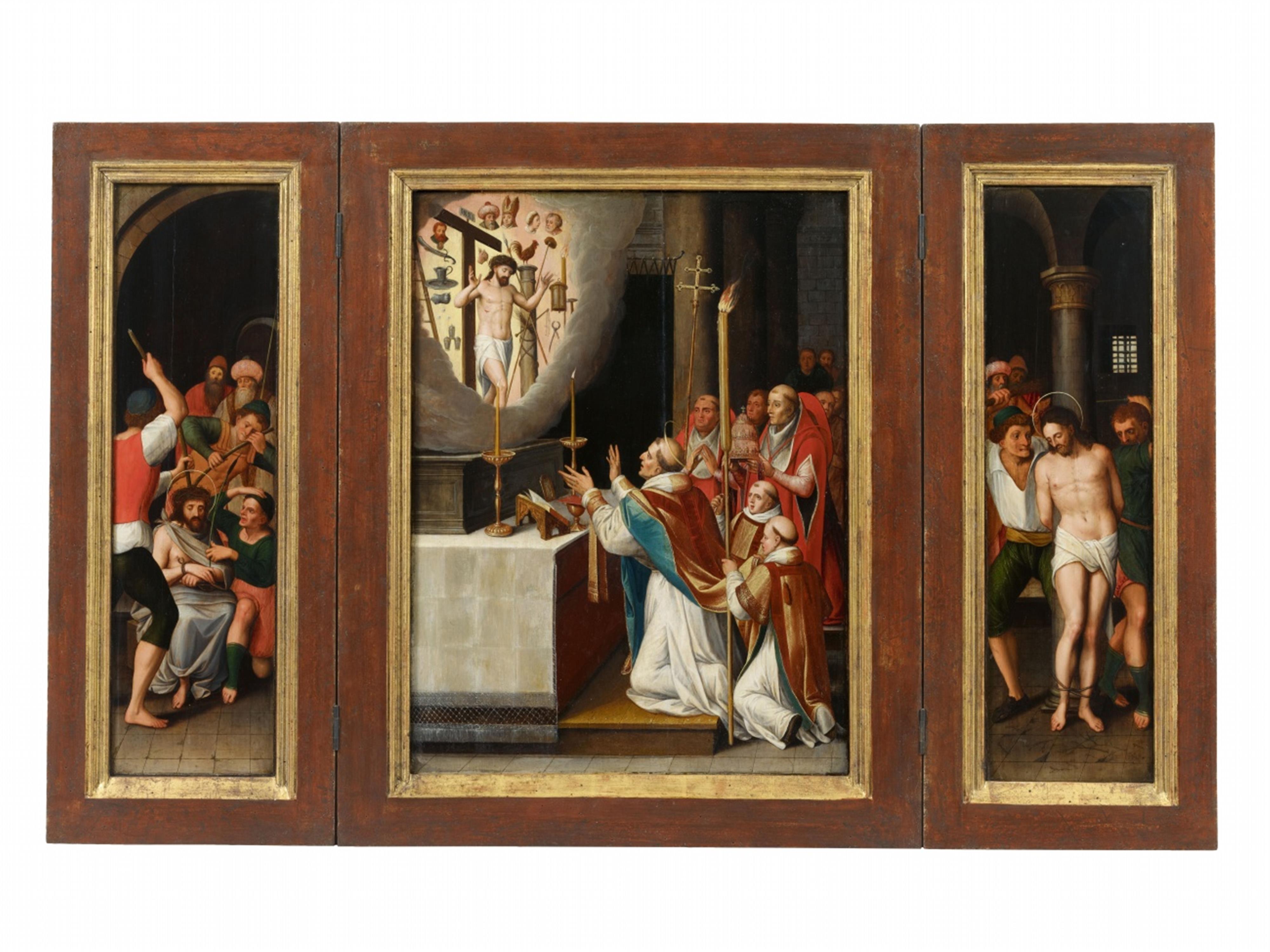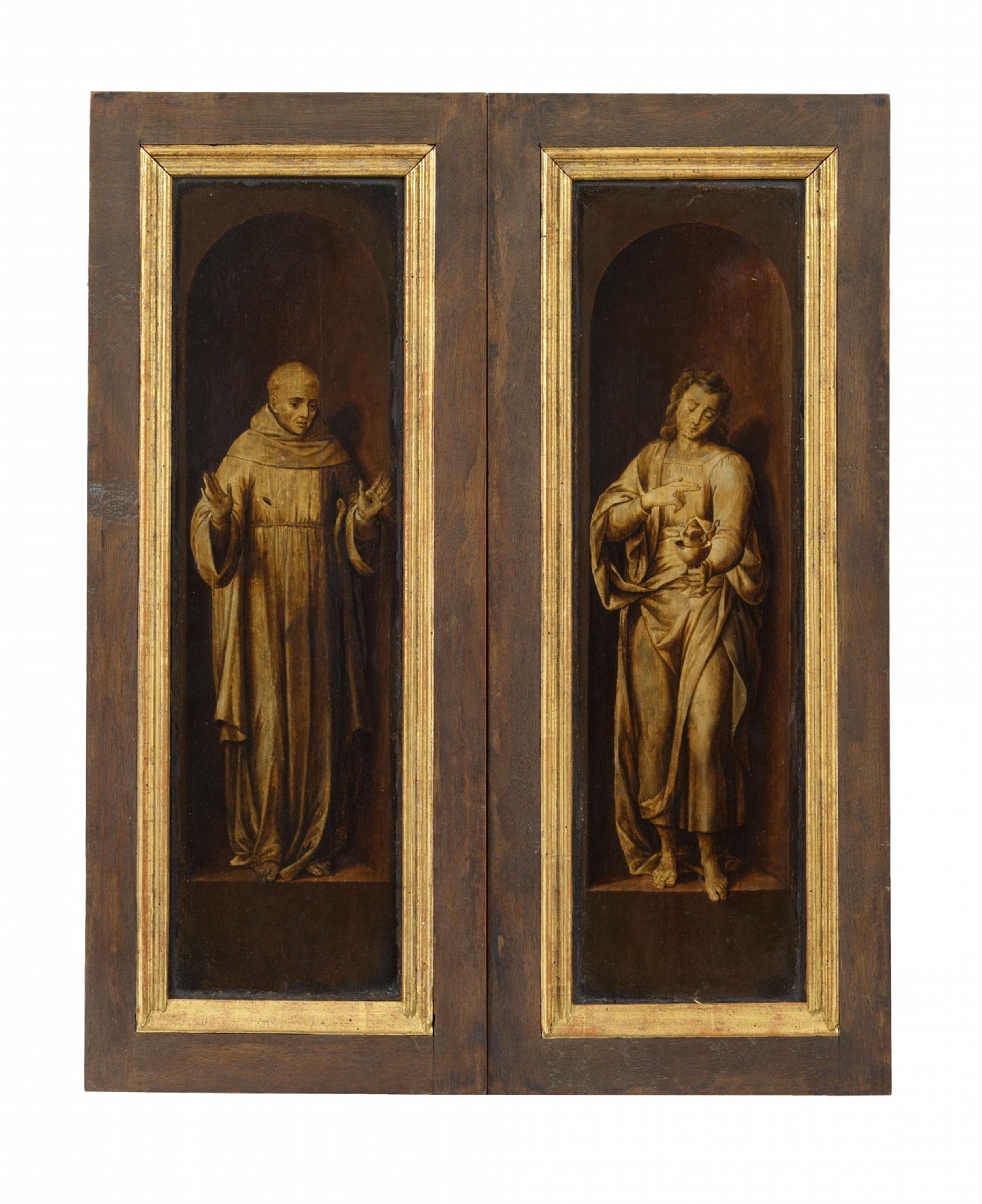Flemish School, ca. 1577
Altarpiece with the Mass of St. Gregory, Christ Crowned with Thorns, and Christ at the Column
Oil on panel. 53 x 39 cm (central panel) each wing 53 x 15 cm.
Dated to the wall in the upper right of the central panel: 1577.
The central panel of this altarpiece shows an apparition of Christ surrounded by the Arma Christi appearing to Pope Gregory I whilst he reads mass. The motif is based on a legend describing this miracle's occurrence in the church of Santa Croce in Gerusalemme in Rome, which was intended to disperse doubts surrounding the transubstantiation - the transformation of the bread and wine into the body and blood of Christ. The earliest depiction of this legend is the 13th/14th century mosaic icon kept in the treasury of Santa Croce in Gerusalemme, which was supposedly commissioned by Gregor himself after seeing the apparition.
The left wing of the altarpiece depicts Christ at the Column, whilst he is shown wearing the crown of thorns on the right. Both themes not only reiterate the Arma Christi motif, but are also strongly linked to the Eucharist. When Christians come together to celebrate Holy Communion, they do so in remembrance of Christ's Passion, death, and resurrection. When closed, the front of the altarpiece shows St. Francis of Assisi with the stigmata, and John the Evangelist with the poison chalice. Both the stigmata and the transformation of the poison can also be linked to the Passion and thus to the Eucharist. The figures are depicted en grisaille in simulated niches in imitation of sculpture; a technique frequently adopted in this time for the weekday view. Although the frame of this piece is not the original, the arrangement of the panels has remained unchanged.
Provenance
Private ownership, Germany.




